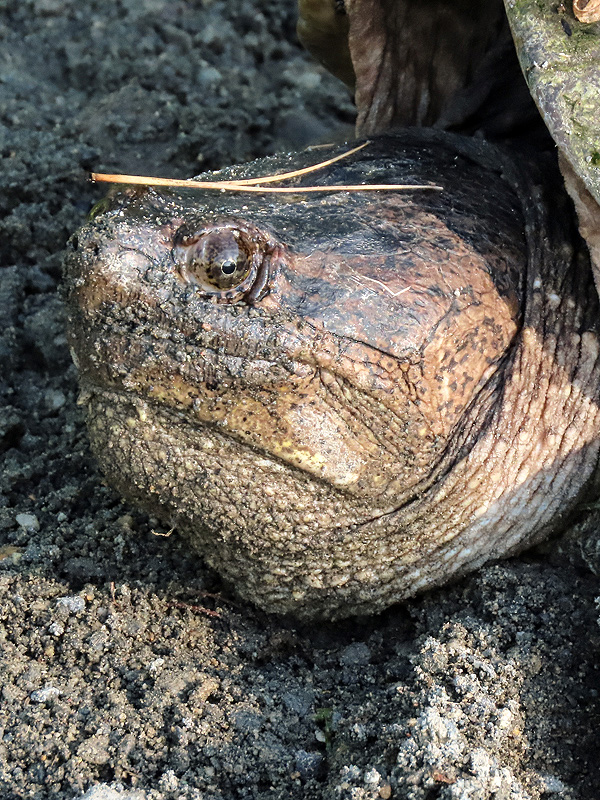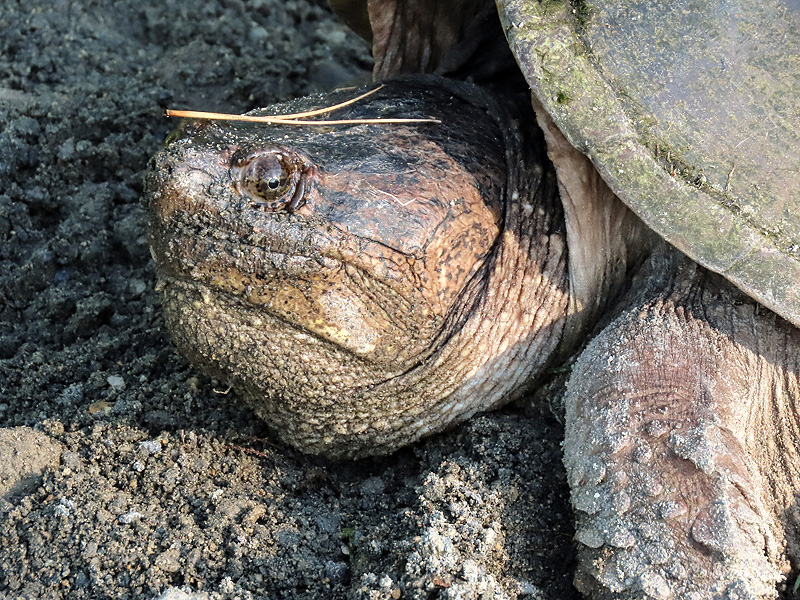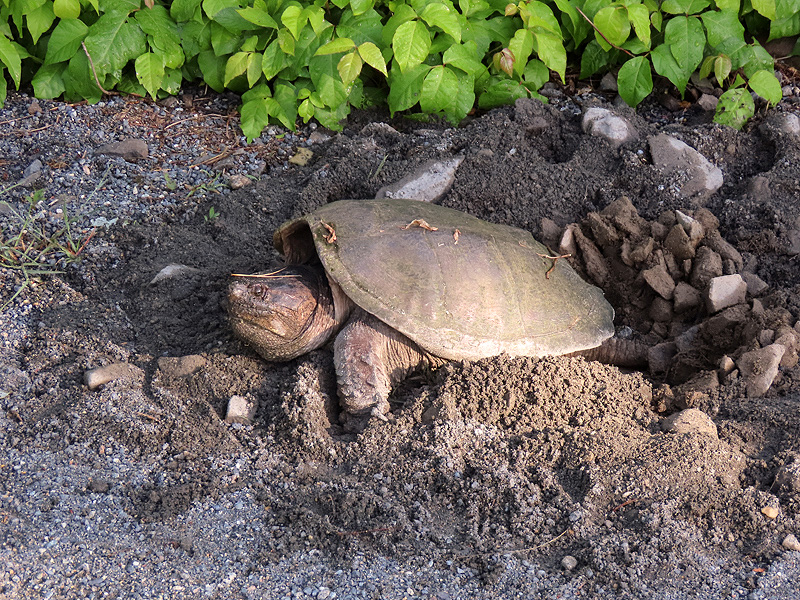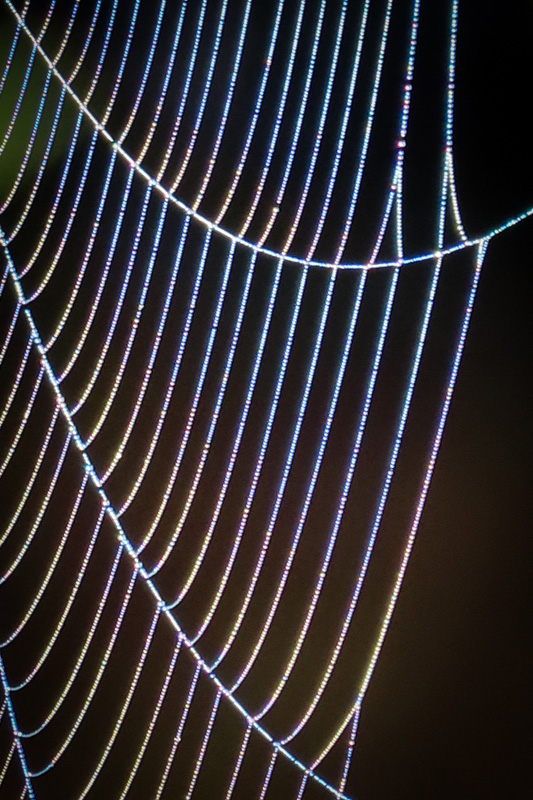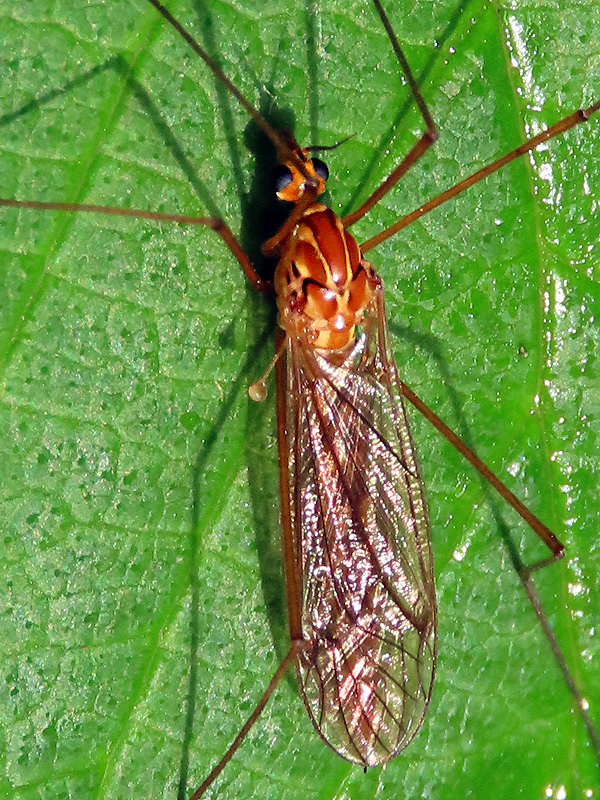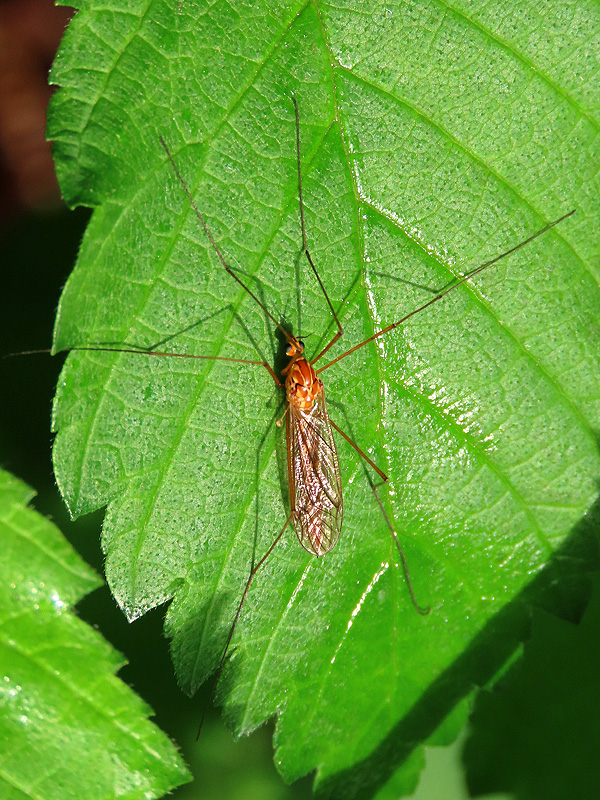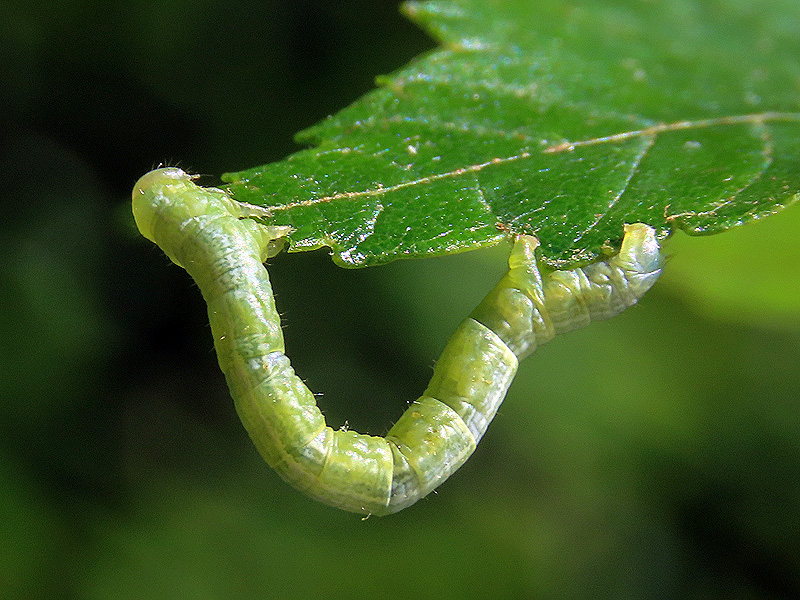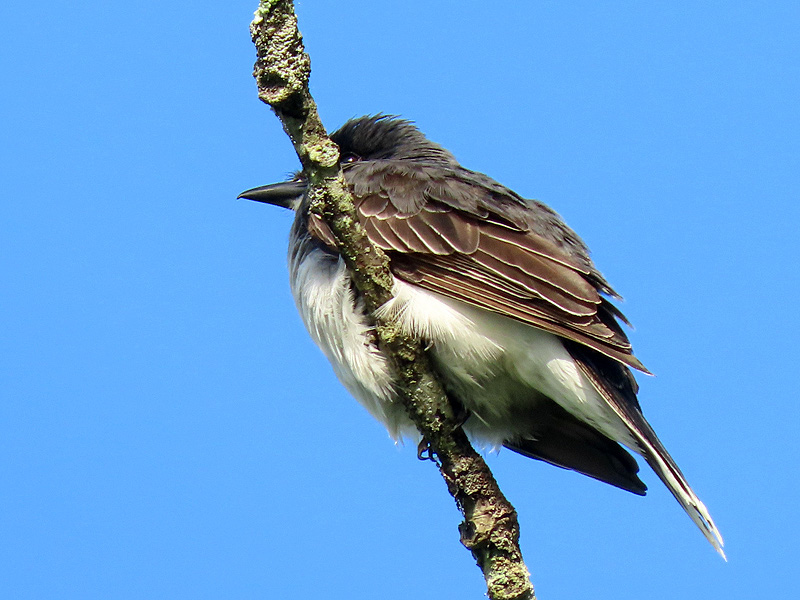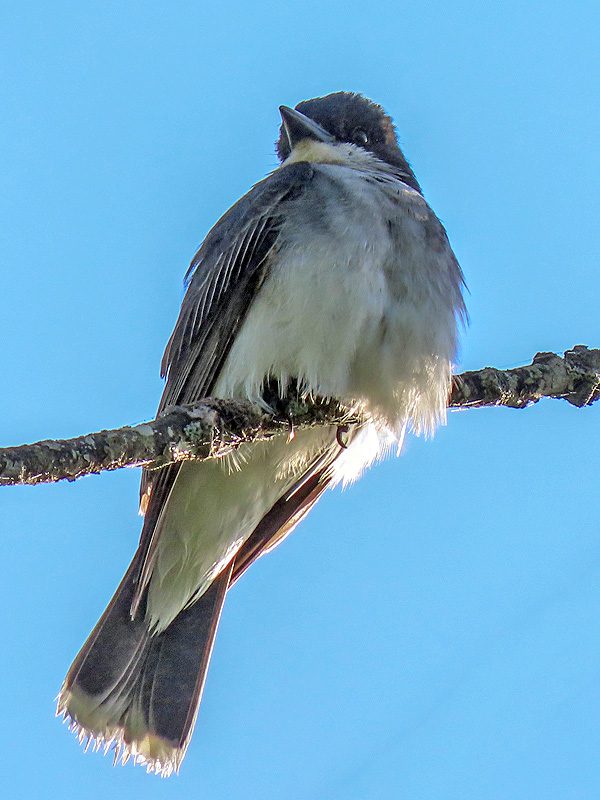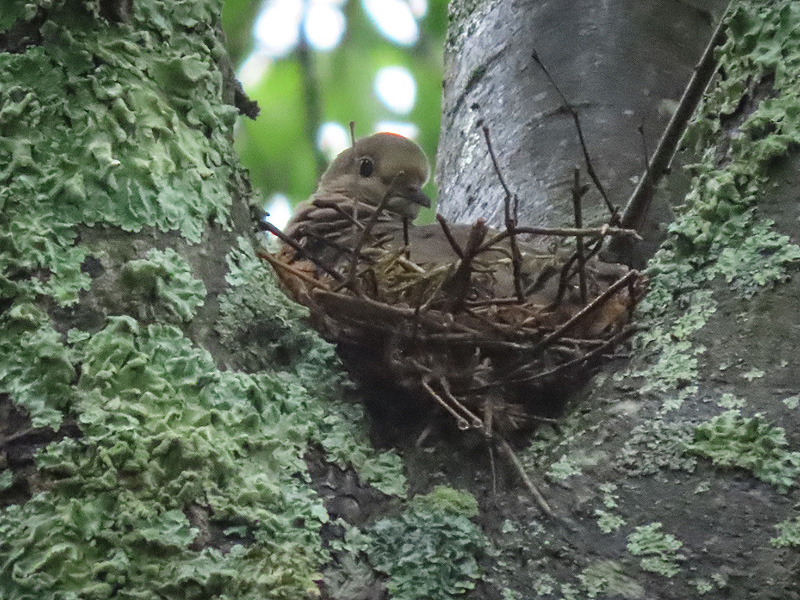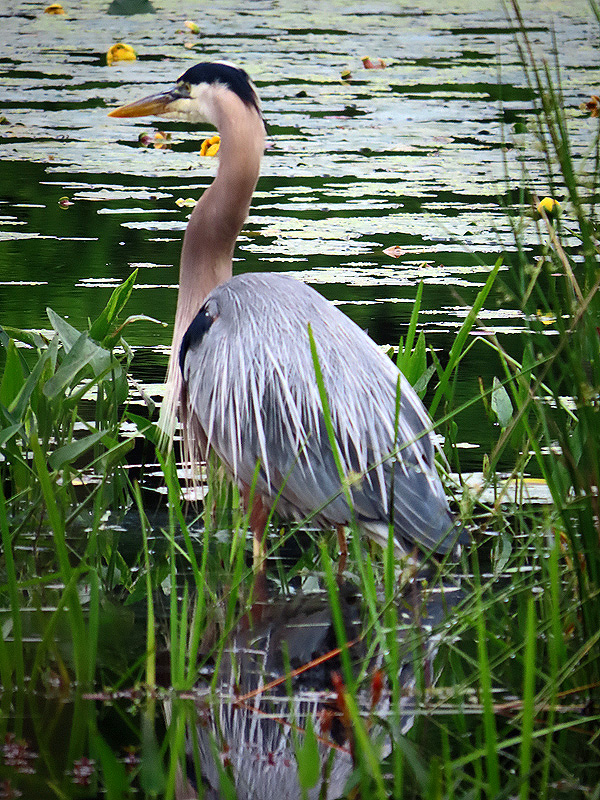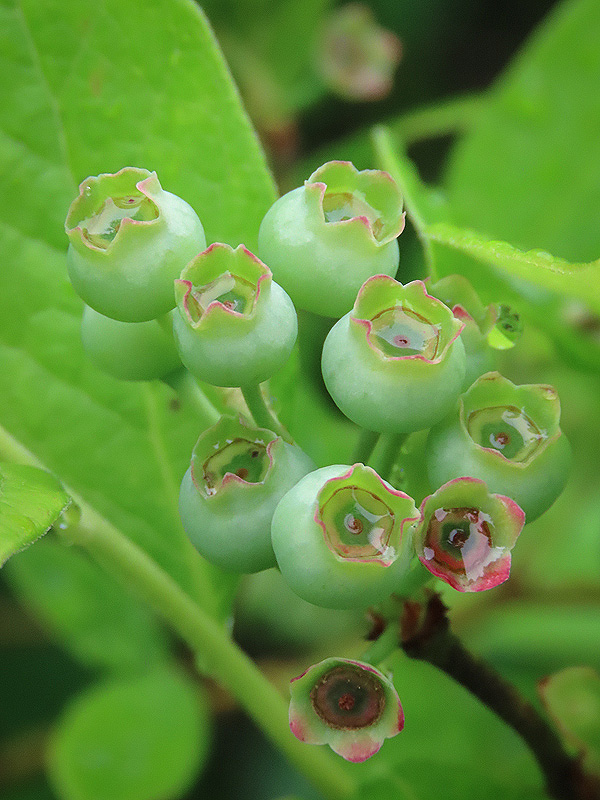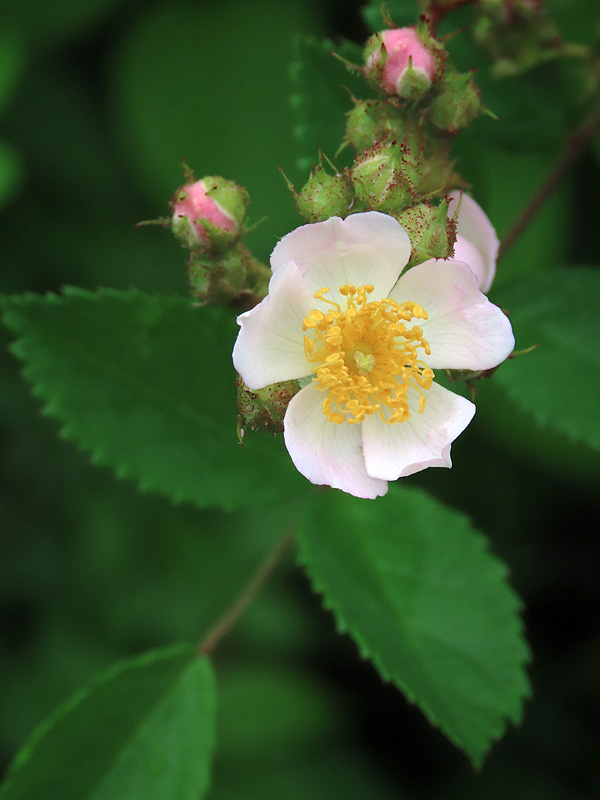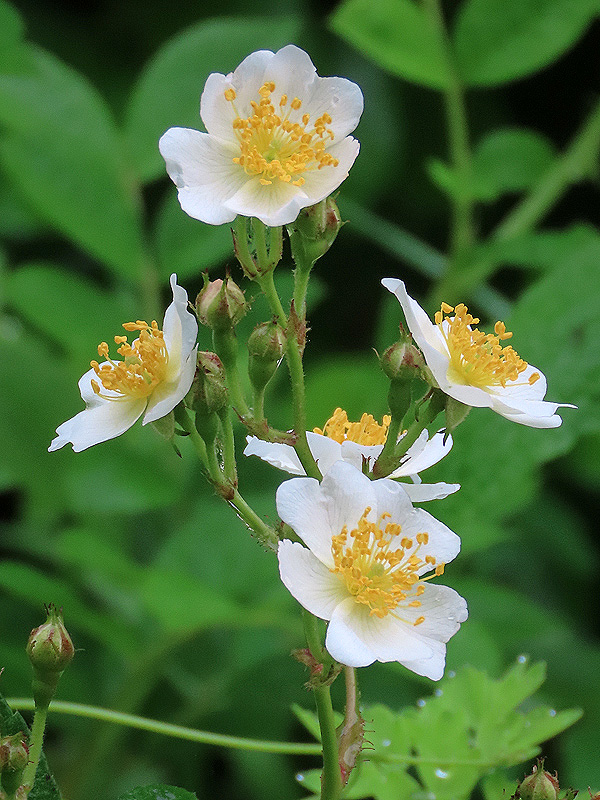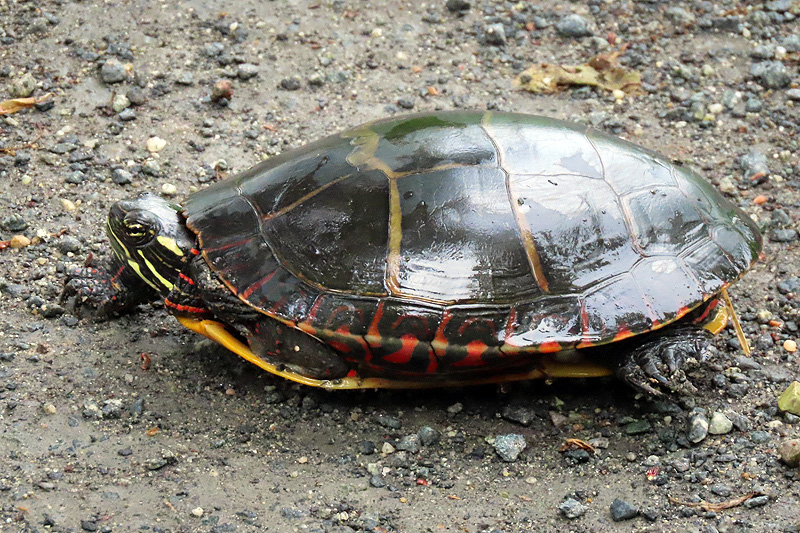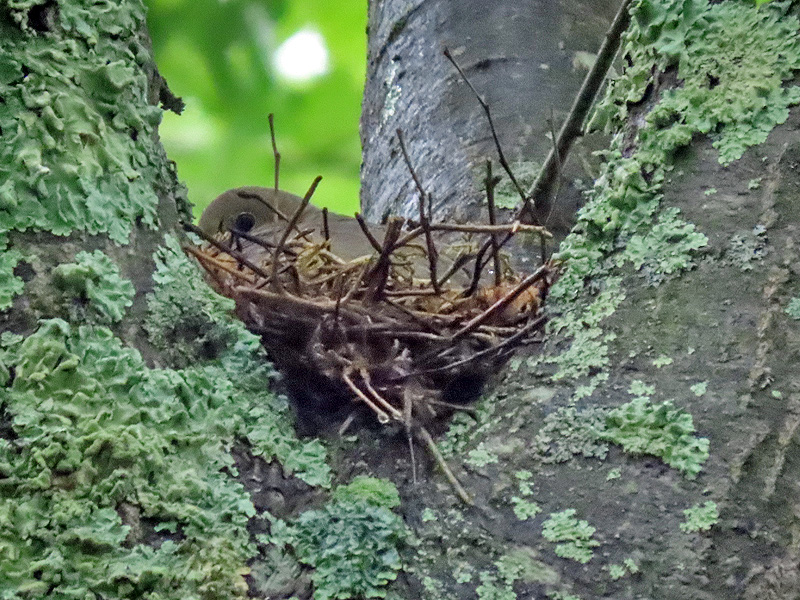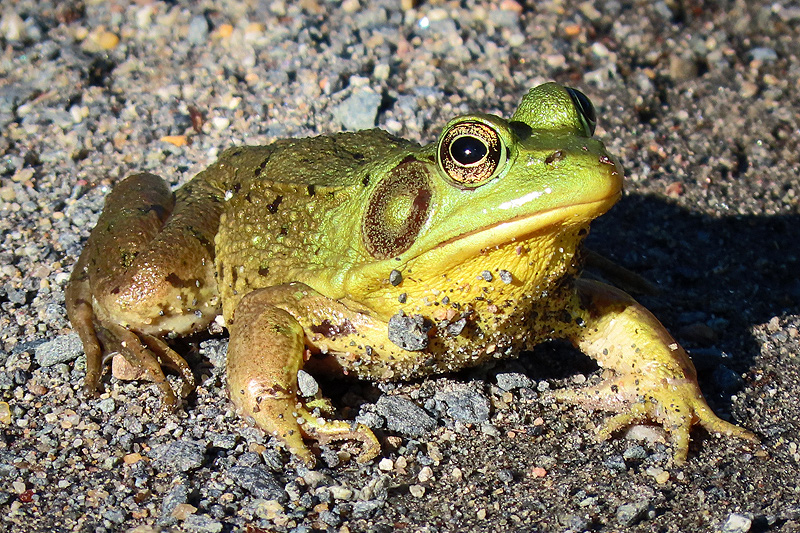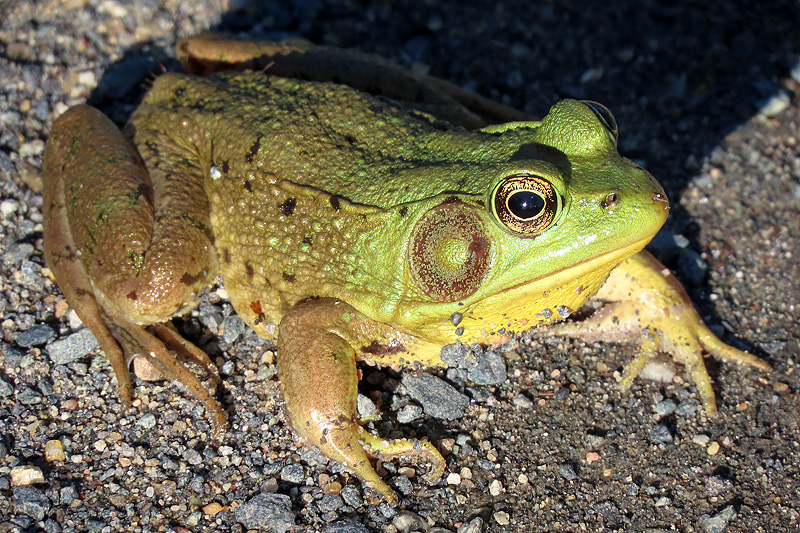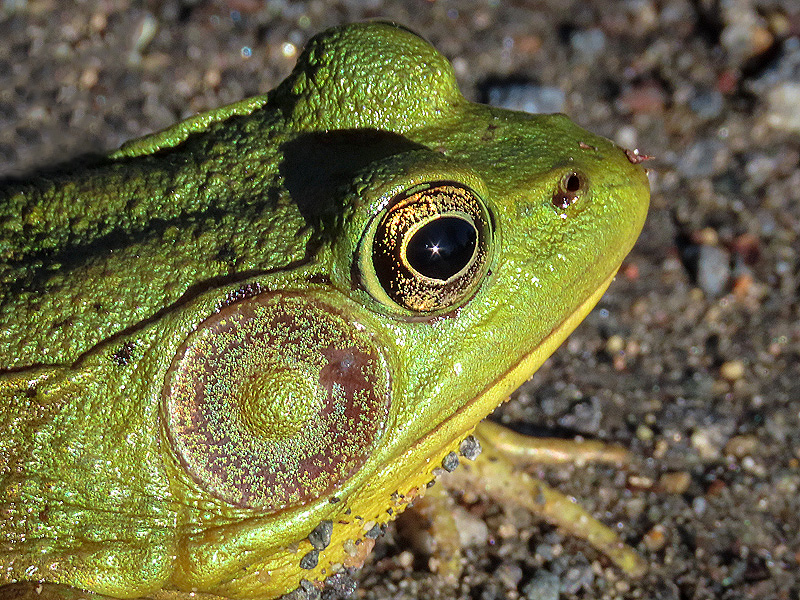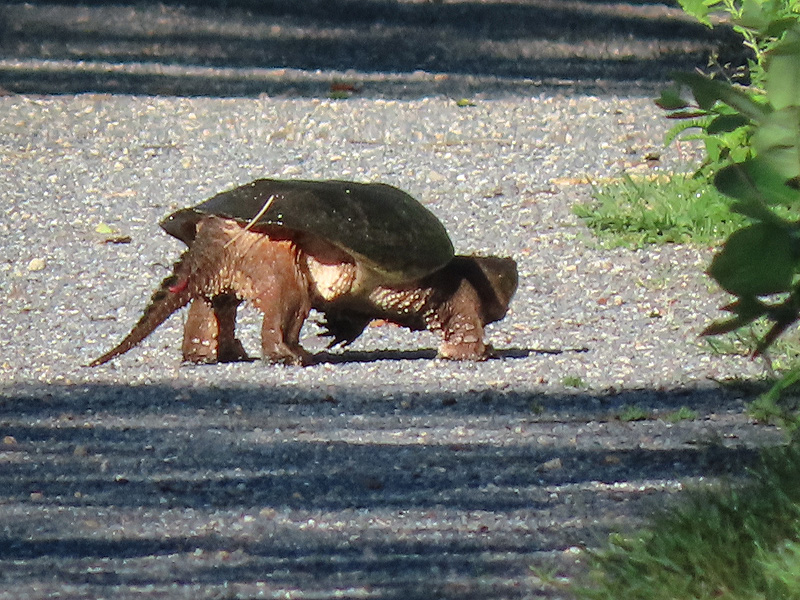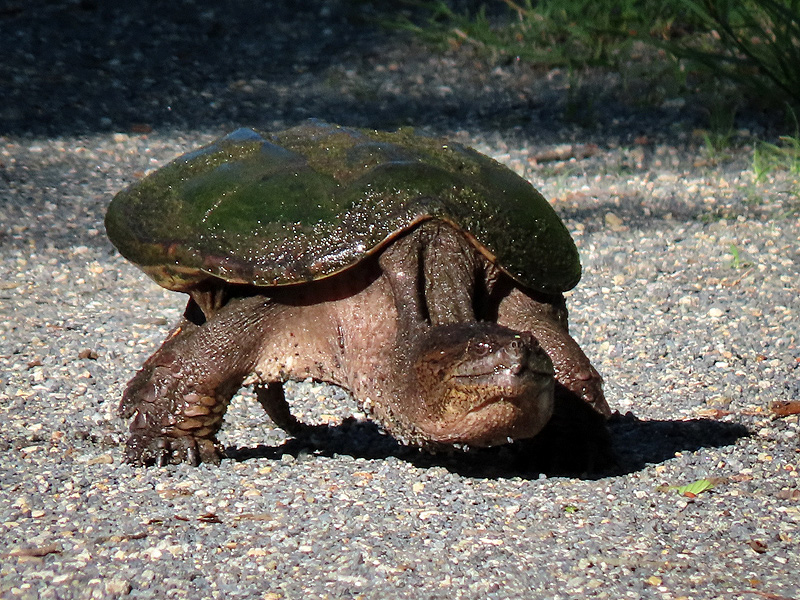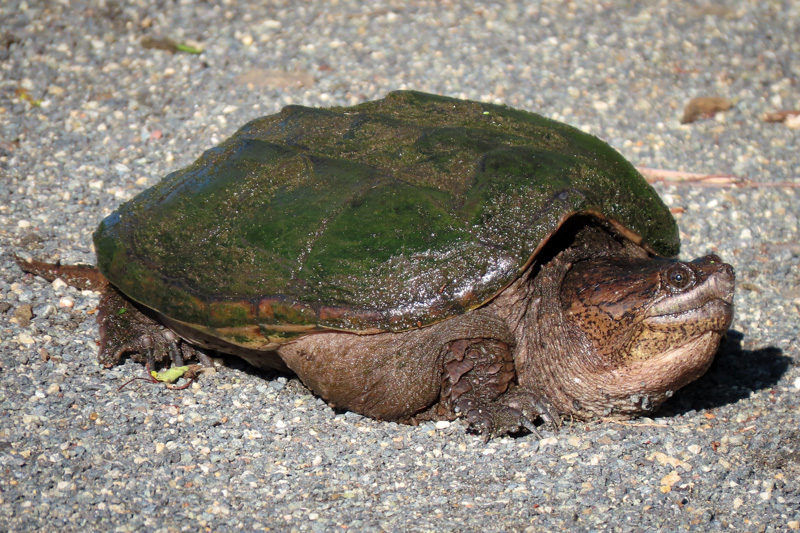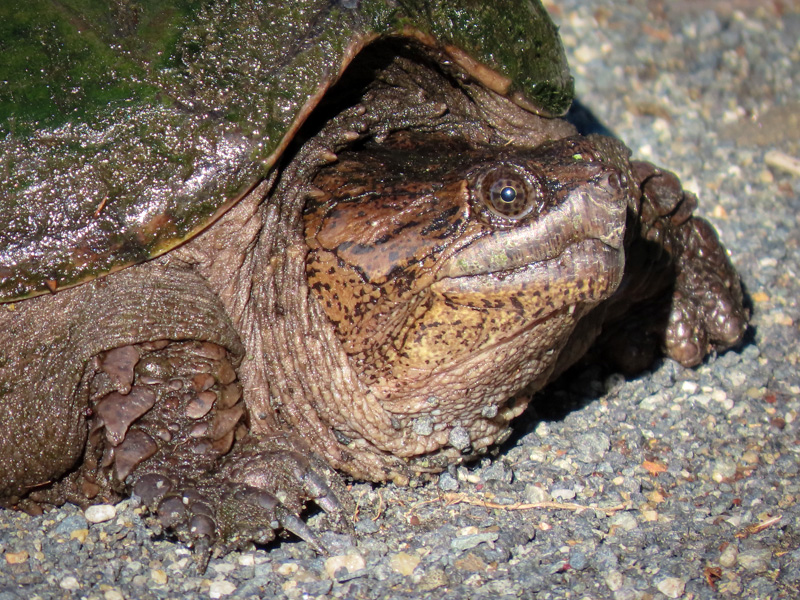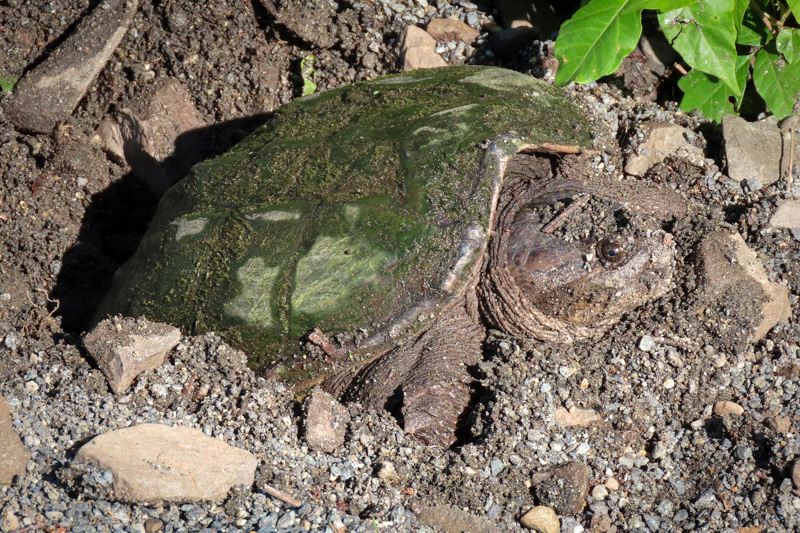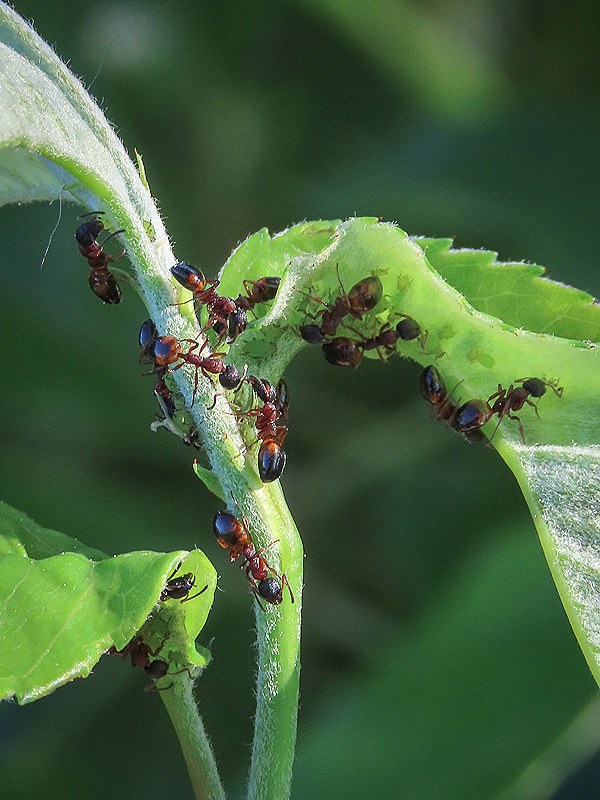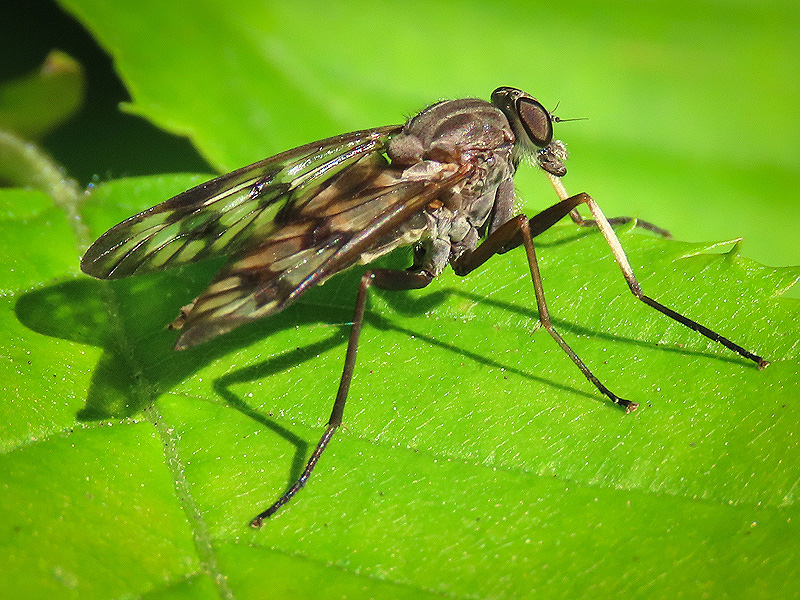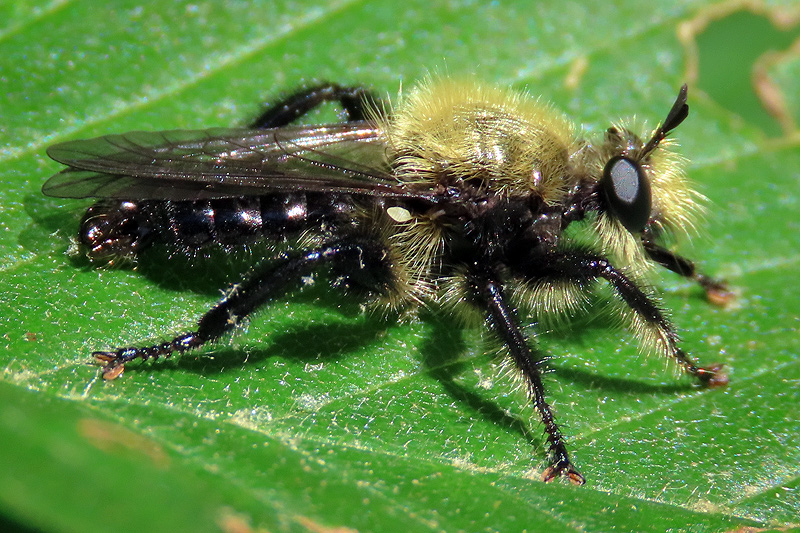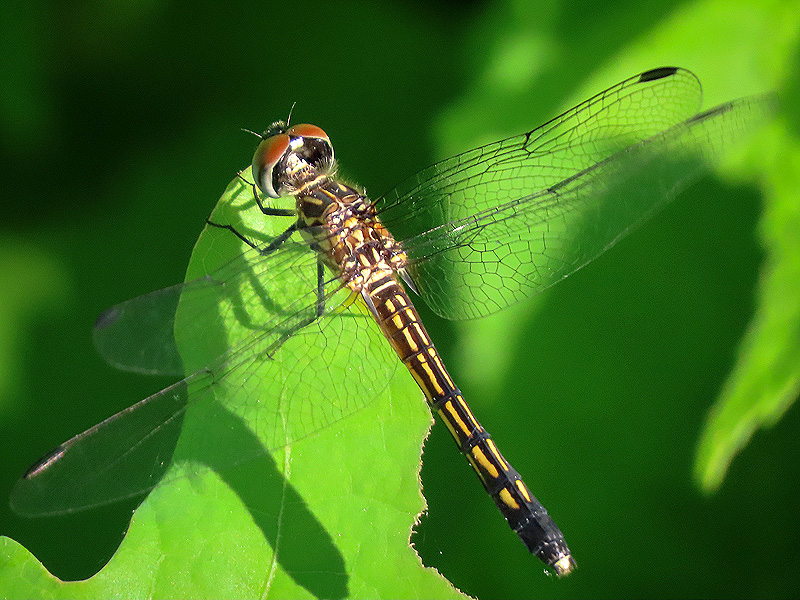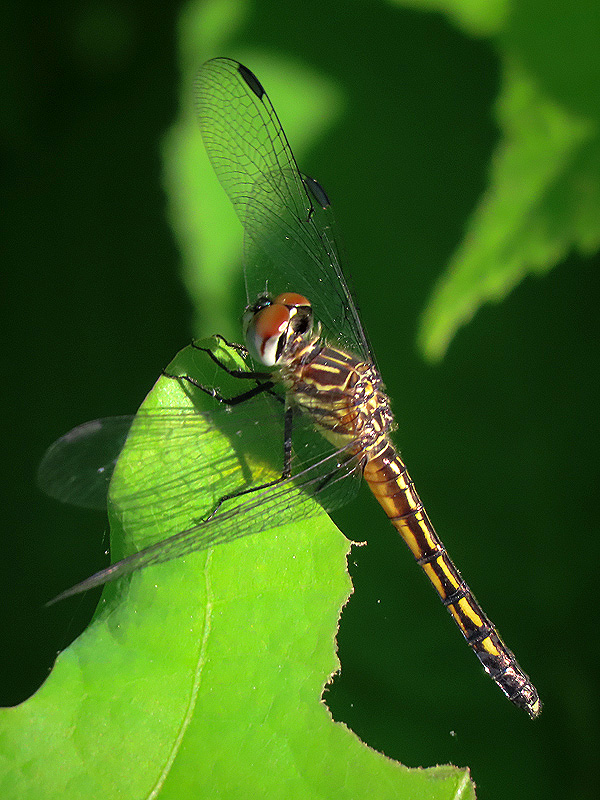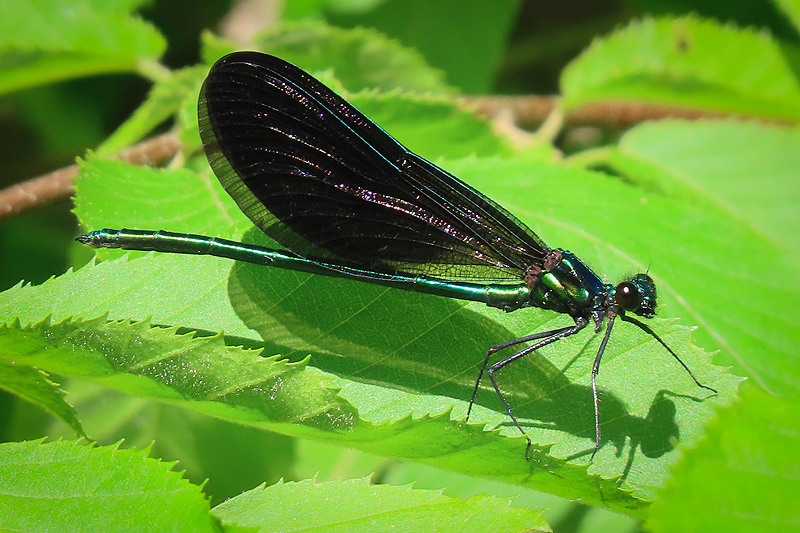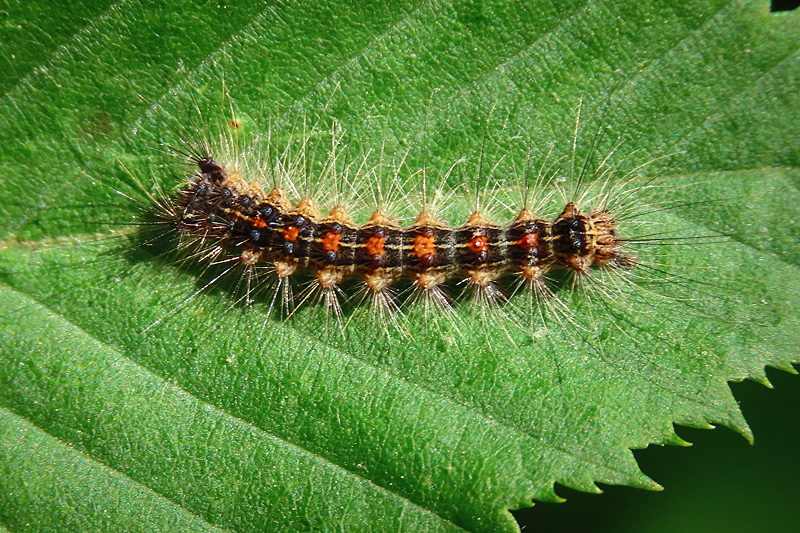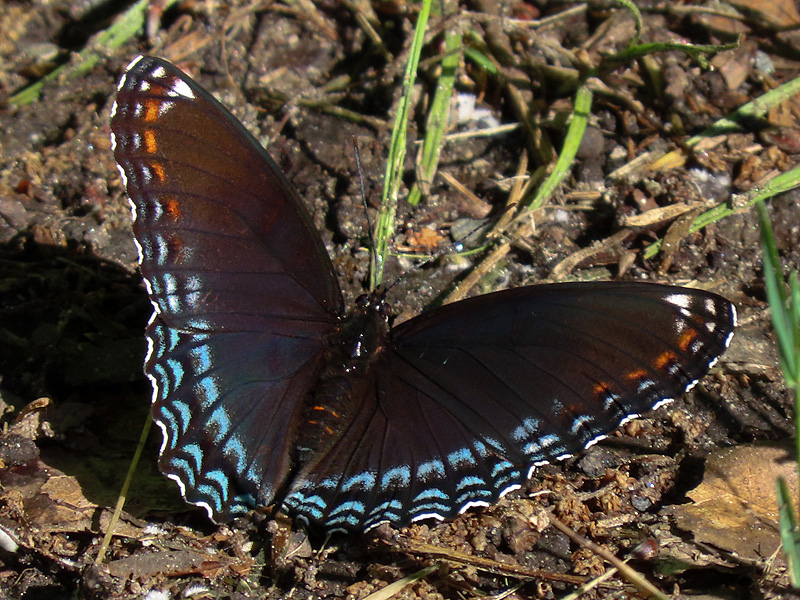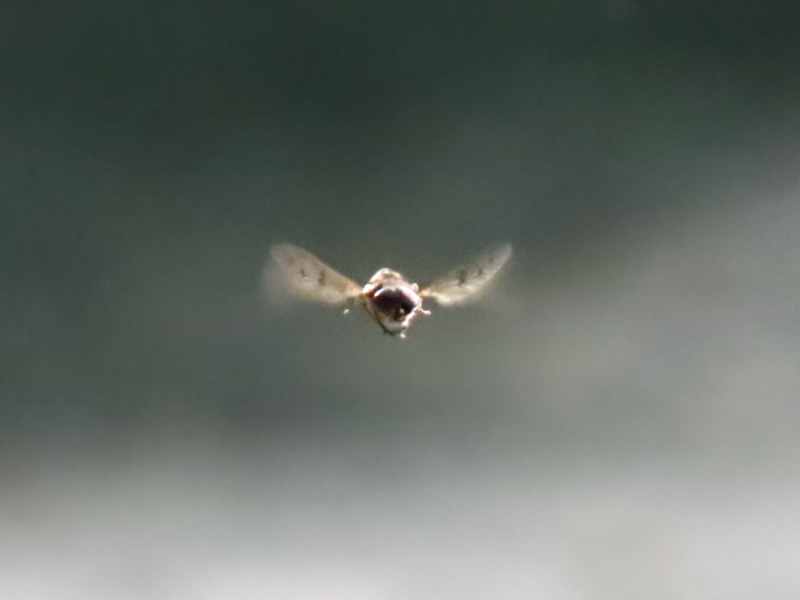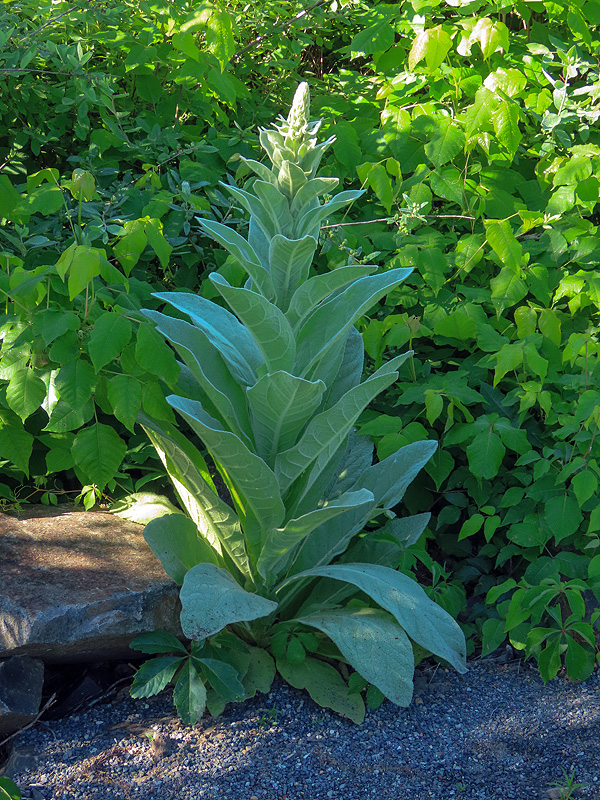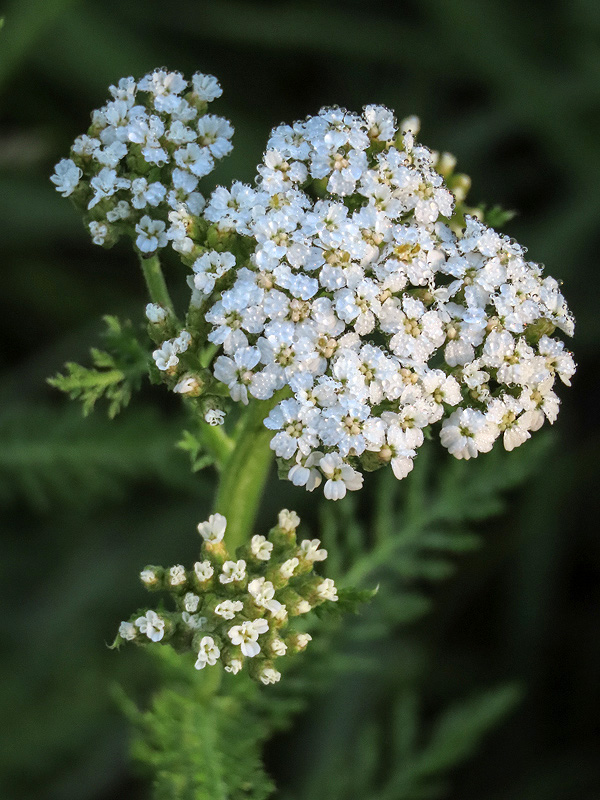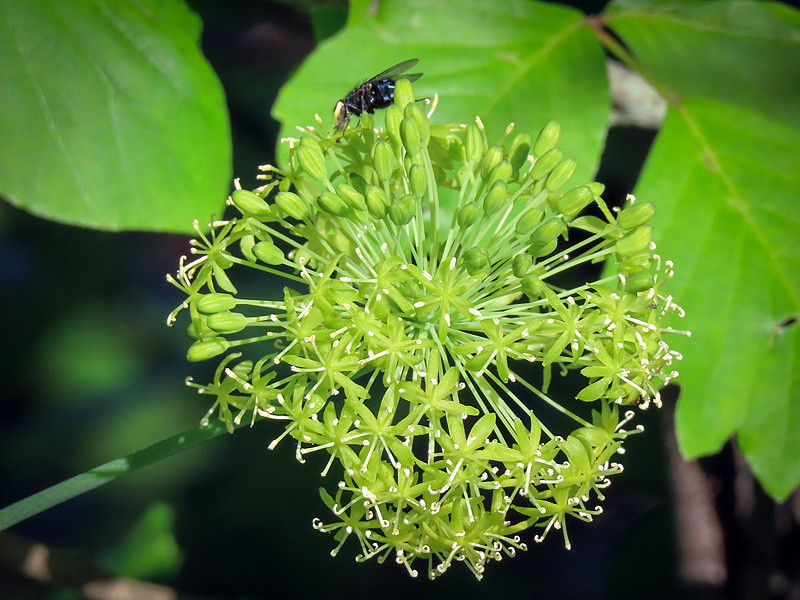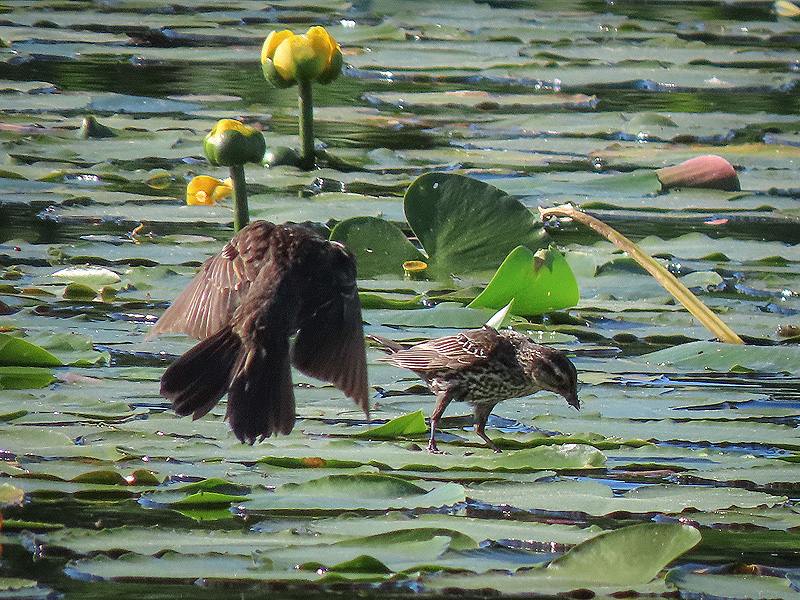Along the Air Line... 2020 - Spring, Part 21 The Air Line Trail in Eastern Connecticut - Stan Malcolm Photos |
HOME: Air Line... 2020 Pages Menu Stan's FlickR Albums |
A female Snapping Turtle (Chelydra serpentina). |
Not remotely tempted to remove the pine needles from her head. |
Usually, they dig their nests in soft soil at the side of the trail. This one was in the trap rock just below the stone dust surface layer. |
Rainbow in dew on this orb-weaver's web. |
|
A Crane Fly (Family Tipulidae). The tiny soup ladle on the left side of the body is one of a pair of haltares, remnants of flies' hind wings. Now they serve as gyroscopic balance organs that help maintain stable flight. |
|
An Inchworm (Family Geometridae) on Maple. |
Looks and acted like a young Eastern Kingbird (Tyrannus tyrannus). |
|
June 6th. No news on the Mourning Dove (Zenaida macroura) nest. |
The usual Great Blue Heron (Ardea herodias). |
Good crop of Highbush Blueberries (Vaccinium corymbosum)... but chipmunks and others will get most of them. |
Multiflora Roses (Rosa multiflora) are starting to bloom. Some have a pinkish cast. |
Others white. |
Painted Turtle (Chrysemys picta) likely looking for a place to bury her eggs. |
Half an hour later, barely a different position. I wonder how they occupy their minds. |
June 7th. Bullfrog (Rana catesbeiana). They've been really loud lately. |
|
|
Far down the trail, a Snapping Turtle (Chelydra serpentina). |
As I got closer, it was coming towards me. |
|
|
When I got really close, it hunkered down. |
|
I walked on, but when I returned she had dug a nest for her eggs. |
The ants I photographed a few days ago are still tending aphids on the same cherry leaves. |
A Snipe Fly (Family Rhagionidae, Rhagio sp.). |
A bumble bee mimicking Robber Fly (Family Asilidae, Laphria sp.). They prey on real bumble bees. |
A female Blue Dasher dragonfly (Pachydiplax longipennis). The double line of bold yellow dashes is distinctive. |
|
A male Black-winged Damselfly (Calopteryx maculatum). |
The first (and I hope only) Gypsy Moth (Lymantria dispar) caterpillar of the year. |
A Red-spotted Purple (Limenitis arthemis astyanax). Further north, this subspecies is replaced by the White or Banded Purple, L. arthemis arthemis). |
June 8th. A hovering Horse Fly (Family Tabanidae, Hybomitra sp., possibly H. lasiophthalma). Males hover in patches of woodland sunlight, defending the spot from other males while guarding terrestrial larvae or a nearby female. |
Common Mullein (Verbascum thapsus) will flower soon. |
Dew on Yarrow (Achillea millifolium). |
Carrion-flower (Smilax herbacea). Later we'll seen dense clusters of green, then blue-black, berries on this vine, a relative of Catbriar. |
Competition among juvenile Red-winged Blackbirds (Agelaius phoeniceus) for food on lily pods. |
